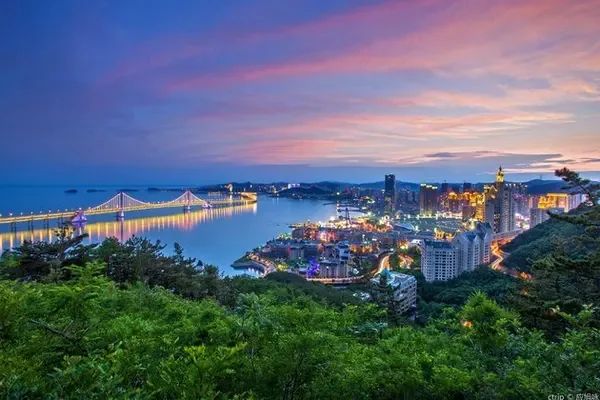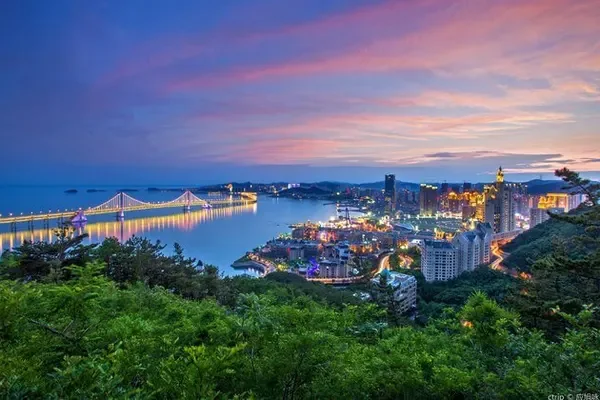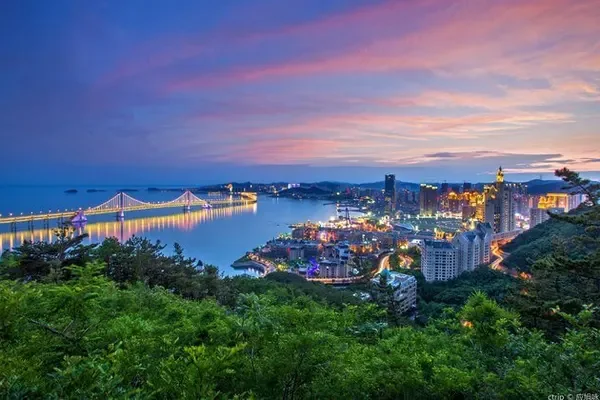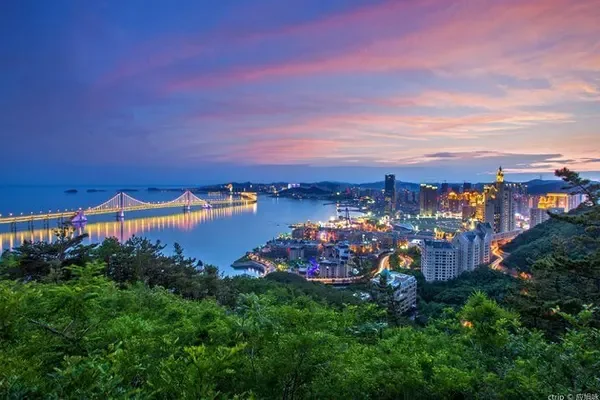Last time, it was said that the Jin Dynasty set up Jinzhongdu in Beijing, and the Jin emperors since King Hailing all sat in Jinzhongdu. Jinzhongdu is located in the southwest of Beijing, probably at the location of Fengtai District, and now it has disappeared without a trace.
The jade urn I saw in Tuancheng, Beihai, "Dushan Dayuhai" is a memorial to Kublai Khan, the emperor of the Yuan Dynasty, when he entered Beijing to establish the capital of Yuan Dynasty in the first year of the Yuan Dynasty (1263), which is equivalent to the cornerstone. Prior to this, during the Mengjin War, Generalissimo Mu Huali under Yuan Taizu Genghis Khan Temujin surrounded Jinzhongdu in 1214 (the ninth year of Yuan Taizu, the second year of Jin Zhenyou, and the seventh year of Jiading in Southern Song Dynasty). After Jin Xuanzong paid tribute and sought peace, he moved the capital to Bianliang. In the second year, Mu Huali turned around and captured the capital of Jinzhong, and established Daxing Mansion on Yanjing Road. After Genghis Khan died, Wo Kuotai succeeded, and after Wo Kuotai died, Mengge Khan succeeded. Similar to the death of Charlemagne, the Carolingian kingdom in Europe, it split into East, West, and Central Franks. After the death of Mengge Khan, the Mongol Empire also fell apart. In addition to Kublai Khan establishing the Yuan Dynasty, he also created the Golden Horde and Chagatai Khanate and Ilkhanate. The other khanates finally adopted democratic centralization, and the remaining Timur Khanate and Eastern Chagatai Khanate finally paid tribute to the Ming Dynasty. This is a later story.
In 1260, Kublai Khan proclaimed himself the Great Khan, and in the first year of the establishment of Zhongtong, he launched a battle with his brothers and won. In the fifth year of Zhongtong, Daxing Mansion on Yanjing Road was changed to Daxing Mansion on Zhongdu Road, and an imperial edict was issued to change the year name to the first year of the Yuan Dynasty. This was 1264, the fifth year of Jingding in the Southern Song Dynasty. After changing the year name and place name, Kublai Khan started to build the capital on the spot, planning to set the capital in Yanjing. This is where all the jade craftsmen raised funds to contribute to the great jade sea in Dushan Mountain. In the eighth year of Zhiyuan (1271), when Kublai Khan drove the craftsmen to build the city, he secretly ordered Liu Bingzhong, the doctor of Guanglu, to go to Shu and said that according to the ancient teaching of "Day Qianyuan", it is best for the Mongolian country to change its name to "Yuan". . Kublai Khan readily "approved" it, and by the way, he became the first emperor instead of Hu Khan. In the second year, after the acceptance of the urban construction project, Kublai Khan issued another edict, changing Zhongdu to Dadu, the capital of Dayuan. This is the origin of Yuan Dadu.
According to the tradition of the Han nationality, starting from the Western Han Dynasty, the temple title of the founding emperor should be called Taizu, the second emperor should be called Taizong, and then there are various sects. The first two emperors, one ancestor and one clan, are the source of the word "ancestor" we say, such as Han Taizu Liu Bang (Emperor Gao), Emperor Taizong Liu Heng (Emperor Wen), and Emperor Shizong Liu Che (Emperor Wu). But this Kublai Khan is amazing. In order to emphasize that he is the authentic descendant of Genghis Khan, he gave Genghis Khan Temujin a temple name "Yuan Taizu". Ordinarily, Kublai Khan should be given the temple title "Yuan Taizong", right? But he was the actual first emperor of the Yuan Dynasty, and he still wanted to use "Zu" as the temple name. Finally, his temple name is called "Yuan Shizu". He learned it from the ancient Han people. The first person to use Shizu as the temple name was Liu Xiu, Emperor Guangwu of the Eastern Han Dynasty. In fact, the temple names are conferred by later generations, and I am just joking around. But "ancestor" does refer to the first and second generation ancestors.
There are not many traces of the buildings in Yuan Dadu in Beijing, and its imperial city was also destroyed and buried under his own imperial city by Zhu Di during the Yongle period. The most famous Yuan Dynasty building in Beijing is the White Pagoda of Miaoying Temple in Fuchengmen. That temple is no longer the same, but the White Pagoda is still the same. This is the first Indian white pagoda in China, and the second white pagoda in Wutai Mountain, Shanxi. Both were built by Nepalese craftsman Anigo. See my article "Visiting the White Pagoda Temple in Beijing". The White Pagoda of Miaoying Temple was built after Kublai Khan built the capital city. Let’s say it was in the eighth year of Zhiyuan. It was built in the sixteenth year of Zhiyuan (1279). The White Pagoda of Mount Wutai was built in the sixth year of Dade in Yuan Dynasty (1302).
When Yuan Dadu built the city, in addition to the Dushan and Dayuhai, there must be a city wall. In the tenth year of Emperor Taizu of the Yuan Dynasty, when Mu Huali captured the capital of Jinzhong, he murdered and set fire to wreak havoc, shattering an old world. When Kublai Khan arrived in Yanjing in the first year of Zhongtong, there was no Jinzhong capital to enter, so he could only live in Tianning Palace, the royal garden of the Jin Dynasty in the suburbs, which is now Beihai Park. When the Yuan Dynasty was built, Kublai Khan re-established a new world and built a brand new metropolis centered on Qionghua Island in Beihai from Jinzhong.
Later, Zhu Di took over a part of the city wall of Yuan Dadu, that is, the southern half, actually most of it. Zhu Di built a wall in Yuan Dadu from Xizhimen to Dongzhimen, and all the walls in the north were discarded. There are three city gates in each direction of Yuan Dadu. To the east are Chongren Gate (Dongzhi Gate), Qihua Gate (Chaoyang Gate) and Guangxi Gate. Guangxi Gate is no longer there; to the west are Heyi Gate (Xizhi Gate) and Pingshun Gate. (Fuchengmen) and Suqingmen, Suqingmen is no longer there. To the south are Shuncheng Gate, Lizheng Gate and Wenming Gate. These three gates are gone now. The location of this section of the city wall should be the current Chang'an Avenue. Although the southern city wall seems to be very close to the imperial palace, in fact the imperial city in the Yuan Dynasty was norther than the current Forbidden City, and the gate of the imperial city should be north of the Jinshui River in the current Forbidden City, not the current Tiananmen Square. There are only two gates on the north wall of Yuan Dadu, Jiande Gate and Anzhen Gate. You see, several city gates in the Yuan Dynasty disappeared, and now only place names remain. These city gates are counted as outer city gates.
The gates of the Yuan Dynasty are gone, but there are still some traces of the city walls. The outer city wall of Yuan Dadu is a rammed earth wall, and a regular rammed earth wall should look like this. This is what I saw in Zhangbi Ancient Castle in Shanxi, which was built during the period of the Five Hu and Sixteen Kingdoms. See my article "Walking the Three Jins when the Autumn Wind Blows: Zhangbi Ancient Castle".

From a distance, the remnant should look like this. This is what I saw at the Liaozhongjing site in Chifeng, Inner Mongolia, see my "Summer Mongolia and Liao Tour II: Chifeng's Visit to Ancient Liao Traces".

The existing city walls of the Yuan Dynasty in Beijing are not as complete as the above. There are still some remnants left in the northern half of Yuan Dadu. The northwest section of the city wall is from Xizhimen to the north to the Zhichun intersection of Xueyuan Road, and then to the east. This section has now built a "Yuan Dadu City Wall Ruins", look at this sign at the intersection of Mingguang Village. This place is likely to be the location of Suqingmen in Yuandadu, and to the south of the Sun Palace on the North Third Ring Road in the east is probably the location of Guangximen in Yuandadu. There is a station on Metro Line 13 called Guangximen. Outside the Guangxi Gate is the moat of the capital of Yuan Dynasty, which is now called "Tucheng Ditch".

The platform above is a cross-section of the Yuan city wall, and a city platform is copied on the platform.

This is not a long stretch of decent city wall, at least the height is not much different, and the two slopes have collapsed a lot. There is still a path left on the top of the city wall.

The Tucheng further north has collapsed like this.

We used to know that the road to the north of Mingguang Village was Xueyuan Road. Starting from Mingguang Village, the east of the road was the College of Posts and Telecommunications, and the west of the North Road was the School of Political Science and Law. After crossing the Jimen Bridge, the film academy is on the east side of the road.
After the earthen city here collapsed, the surrounding residents and the garden bureau took turns planting trees and digging soil. Although the rammed earth is fairly tough, their children and grandchildren can't help digging it. Not to mention the height of the wall, the facade of the wall is basically a flat slope within 10%. There are many trees planted on the slope, and in spring, a hundred flowers will bloom, and they will be colorful.


Every day, there will definitely be "she" smiling among the flowers, and among the flowers is the "Jimen Yanshu", one of the eight scenic spots in Yanjing.

The Eight Views of Yanjing was originally chosen by Confucians in the Jin Dynasty. Although there were also "Eight Views" before that, they were only passed down orally, and there were no black and white words. During the Mingchang period of Jin Zhangzong in the Jin Dynasty, there was a book "Mingchang Legacy", which should be produced by movable type printing. The eight sceneries of Yanjing recorded in the book include the autumn wind in Taiye, the spring shade in Qiongdao, the sunset in Jintai, the rain in Jimen, the snow in Xishan, the rainbow in Yuquan, the moon in Lugou and the emerald green in Juyong. These eight landscapes are all outside the capital of Jinzhong. The first two are in Tianning Palace, the imperial garden, which is now Beihai Park, and they are still related to the royal family. The other six places were established by folk beauty lovers and good travelers, so it is said that the masters are among the folks since ancient times. Take a look at the small folk temple next to the city gate of Yanshu in Jimen and the big Buddha inside for folk worship.

In the Yuan Dynasty, some literati changed the "Taiye Qiufeng" in the Eight Scenes of the Jin Dynasty to "Taiye Qiubo". At that time, there might be a girl who went to Beihai Park at night to scoop up a ladle of water and put it under the window of the boy she liked, which was called secretly sending glances. In fact, this change means that the Jin Dynasty people went to Beihai to drink autumn northwest wind instead of drinking autumn water in the lake. In fact, the artistic conception of autumn wind and autumn waves is not much different. In addition, the Yuan people also changed "Xishan Accumulated Snow" to "Xishan Jixue". This is a good modification, "Jixue" is more poetic than the original "Accumulated Snow". Although the people of the Yuan Dynasty destroyed the Southern Song Dynasty, they still learned from the culture of the Song Dynasty. The people of the Song Dynasty had a sentence of "the soul of poetry, the real wind butterfly. The cold fragrance is clear to the bone. The dream is ten li, and the plum blossom is snowing". During the Yongle period of the Ming Dynasty, the academicians of the Imperial Academy changed the Jimen Feiyu to the Jimen Yanshu, which is also more poetic. Prime Minister Li Dongyang added two more sceneries to these eight scenes, which are called the autumn wind in the south and the rain in the eastern suburbs. Nanyuan refers to the Royal Hunting Garden Nanyuan, and Dongjiao Shiyu refers to the scene of farmers outside Chaoyang Gate plowing in the spring rain.
In the Qing Dynasty, there was an emperor named Qianlong who loved beauty and was good at traveling. When he ascended the throne for 16 years, this old cadre organized an expert group. Jintai Sunset, Jimen Yanshu, Xishan Qingxue, Yuquan Baotu, Lugou Xiaoyue and Juyong emerald green. Laogan was afraid that people would not understand the meaning of "Jixue", so he changed it to the straightforward "Qingxue", which was a failure without poetry. Lao Gan also did another thing. He inscribed words for each scenic spot, and then carved them into imperial steles and erected them in the scenic spots, and built an imperial stele pavilion. The "Jimen Yanshu" stele in the picture above is the imperial stele of Qianlong. In the 1980s, the Garden Bureau rebuilt this scenic spot, and built a fake city wall and a fake city gate. The imperial stele was not rebuilt. pavilion. The original Yubei Pavilion was commonly known as Huangtingzi, and now there is also a place name commonly known as Huangtingzi.
Standing on the city wall, you can watch the surrounding buildings.

Of course, an official house will be built under the city wall so that the cleaners can rest. Don't get me wrong, the pavilion in the picture is not a fake yellow pavilion.

This Jimen is the gate of the ancient Jicheng. We know that Jizhou is on the territory of Tianjin, east of Beijing. How could this be Jimen? In the Western Zhou Dynasty, the capital of the State of Yan was Yandu. In the Eastern Zhou Dynasty, not only King Ping of Zhou moved the capital, but also the capital of the State of Yan moved to Jicheng. This Yandu Jicheng is in Beijing, not the Jizhou in Tianjin. Now the archaeological department is still unable to determine the true location of the ancient Jicheng, and everyone tends to be in the Niujie area of Nancheng. Jicheng got its name from Jiqiu in the city. For some reason, since the Jin and Yuan Dynasties, the ancients believed that the place where Jimen Yanshu was located was Jiqiu, so it was rumored that this place was "Jimen". The contemporary people's use of "Jimen" as the place name of this place is probably based on "Jimen Yanshu", which is a rumour.
The "smoke tree" mentioned by literati usually refers to trees and jungles shrouded in clouds and smoke, not the curling smoke from cooking. In the Song Dynasty, there was Liu Yong, a lyrical poet of the graceful school. He once wrote, "The Baling bridge with uneven smoke and trees, the scenery is exhausted before the dynasty. The old willows and old willows have been climbed and folded several times, and the waist of the Chu Palace is haggard." It can be seen from this that the smoke trees should be poplars and willows, especially the palace wall willows, which are as ethereal as smoke when the westerly wind blows. I think there were no willows here in the Jin Dynasty, so I can only watch the rain. In the Ming Dynasty, Yuantu City was abolished, and the place was full of smoke and willows. Now, those willows or willows have been climbed and folded several times, and there is no trace of the Chu palace at all. There are only a few bushes left, and the scenery of the smoke tree is gone.
If you go further north from Jimen Yanshu, you will reach the northwest corner of Yuantu City, and you should turn east. There is a river outside this Tucheng, which is now called Xiaoyue River, which should be the moat of Yuan Dadu.

The section of Xueyuan Road under Tucheng is now called Xitucheng Road.

After turning this bend, it should be called "Beitucheng Road", right? Sure enough.

In this place, a park in the center of the street was opened along the north and south banks of the Xiaoyue River, called "Yuantucheng Ruins Park".

If Xiaoyue River is the moat of Yuan Dadu, then Tucheng should be on the south bank of the river. But there is no trace of Tucheng anymore, and the ground is already the site of the film academy and movie channel.

Since it is called a park, it must be a place where flowers bloom.



Speaking of blooming flowers, there is a very famous flower field along this Tucheng. To the north of Xiaxiaoyue River in Beitu City, there is a very important traffic artery in Beijing underground, which is Beijing Subway Line 10. Go east along the "Yuantucheng Ruins Park" just now, and you will find Mudanyuan subway station not far away. From here, you can board Metro Line 10, and you will find that the northern section of Metro Line 10 runs along the north city wall of Yuandadu. You can see the names of the two city gates on the north side of Yuan Dadu: Jiande Gate and Anzhen Gate, both of which have stations. If you don’t get off there, the two city gates are just a place name, and there are no buildings on the ground. There is also a station between Jiandemen and Anzhenmen called Beitucheng. Get off here and get out of the station to begonia Huaxi, which is the flower field under the city wall of the Yuan Dynasty. The north-south Beichen Road in this place is part of the central axis of Beijing, and Haitang Huaxi can be said to be at the northernmost end of the central axis of Yuan Dadu. Therefore, Beitucheng Road takes this as the boundary. The west side just now is "Beitucheng West Road", and from here to the east is "Beitucheng East Road". What you see on Beitucheng West Road is the "Yuan Dadu Relics Park", and Haitang Huaxi is called "Yuan Dadu City Wall Relics Park". The "river" here is still the moat of the capital of Yuan Dynasty, which is connected with the Xiaoyue River in the west. And it goes all the way to Guangxi Gate in the east. Begonia flowers bloom freely on the north and south banks of the moat river, and the mounds along the south bank are still there, so the place name "Beitucheng" is still used today.
Check out the crabapple blooms on the banks of the river.


Every spring, people take off their bloated winter clothes and put on colorful spring clothes, and then come to Haitang Huaxi in groups as tourists. When the tourists come in spring, the crabapple trees on both sides of the river bloom, not for anything else but to compete with the tourists. Sometimes, officials will also come to enjoy the beautiful spring with the people, such as Kangxi. When Kangxi returned home after admiring the begonias, he found a piece of paper and wrote on it, "The fine grass covers the greenery, and the wild flowers bloom and the clothes are fragrant." Then he threw his pen on the ground and went to court to govern. Look at the crabapple flowers that compete with tourists.



Like the Jimen Yanshu, a house should also be built here for the cleaners to rest and store their brooms.

Hanging on the door is a "Begonia Flower Creek" business card plaque, inscribed with "Qianshi", which should be the pen name of Li Jianjun, a calligrapher and painter. There is a calligrapher and painter Li Jianjun everywhere. This is a native of Beijing, and he may live near Beitu City.
"In front of the house and behind the house, plant melons and beans." In Haitang Huaxi, crabapple trees will be planted in front of and behind the house.

Only the White Pagoda of Miaoying Temple is the only surviving Yuan Dadu building in Beijing, and the rest are the remains of these city walls. In addition, according to textual research, the Duanhong Bridge in the Forbidden City is a building in the imperial city of the Yuan Dynasty, which is equivalent to the current Jinshui Bridge. I'll write a Forbidden City post next time.



